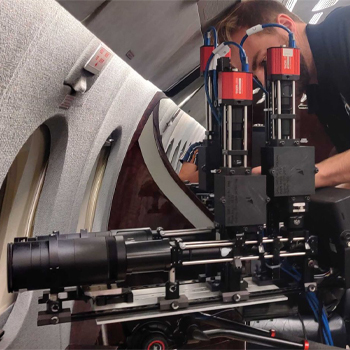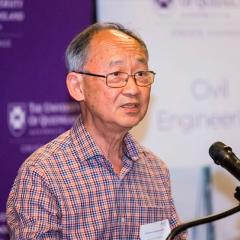Original story posted here.
Three of our HDR students - Sam Lock, Nathan Lu and Toby van den Herik had the amazing privilege and opportunity to take their research to the next level - thanks to a great collaboration made possible by peers at the University of Southern Queensland, Rocket Technologies International (RTI), and NASA - National Aeronautics and Space Administration.
They recently travelled to the USA to take part in the NASA HORIS (Hypervelocity #OSIRISREx Re-entry Imaging & Spectroscopy) mission, in which they undertook an airborne observation of the spacecraft as it re-entered the atmosphere at over 12 km/s.
Lots of hard work and preparation came together as they arrived in Dallas on the 19th of September, with all their equipment securely packed. The following 5 days were hectic with: a flight to Utah on the next day and because they wanted to test the equipment, almost no sleep in a race to assemble all the different components of their tracking and spectroscopy system.
- Taking part in an official NASA testing flight on day 3 to meet all NASA's test requirements.
- More prepping and testing for the official mission flight and finally, the 5-hour mission flight, they all worked and prepped so hard for to collect data.
The flight data the team collected, will be used to further an understanding of the extreme heating environment around spacecraft as they re-enter.
To collect the data, they had to design a system to study the radiative heating emitted from the high-temperature air surrounding the capsule using spectroscopy. With the observation window lasting for less than a minute, this was all dependent on the team both finding and manually tracking the spacecraft from their plane during this short period of time.
high-temperature air surrounding the capsule using spectroscopy. With the observation window lasting for less than a minute, this was all dependent on the team both finding and manually tracking the spacecraft from their plane during this short period of time.
They also had the time to tour the NASA facilities, rub shoulders with NASA staff and meet some of the data analysts who specifically are involved in the design and testing of re-entering spacecraft, at NASA Ames.
Now it is back to the lab on campus, processing the data through a calibration process converting it into useable information.
Thanks again to the University of Southern Queensland and Rocket Technologies International for leading and sponsoring this mission our students could be part of!!



